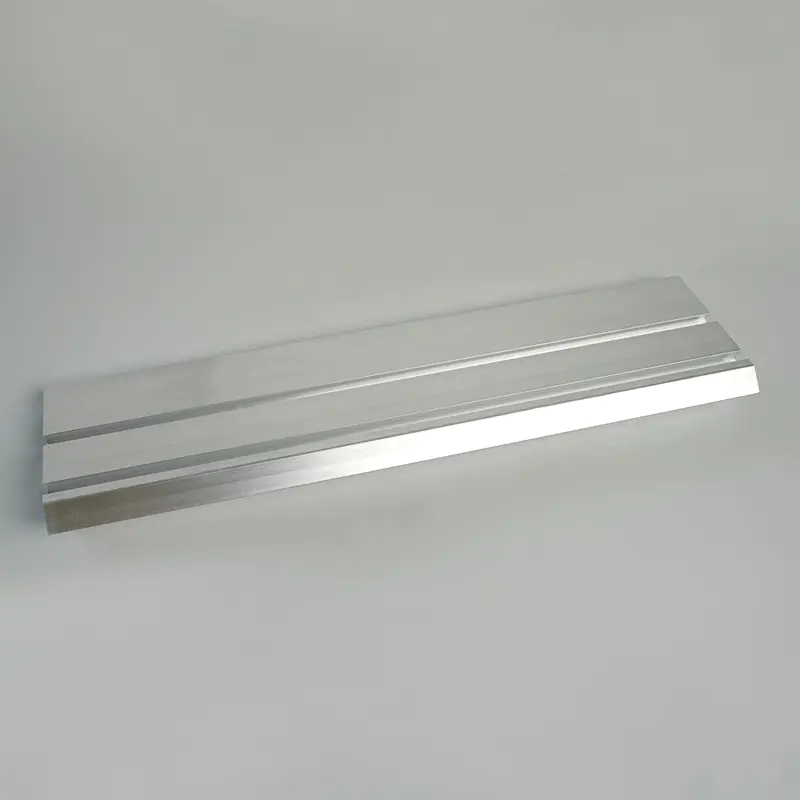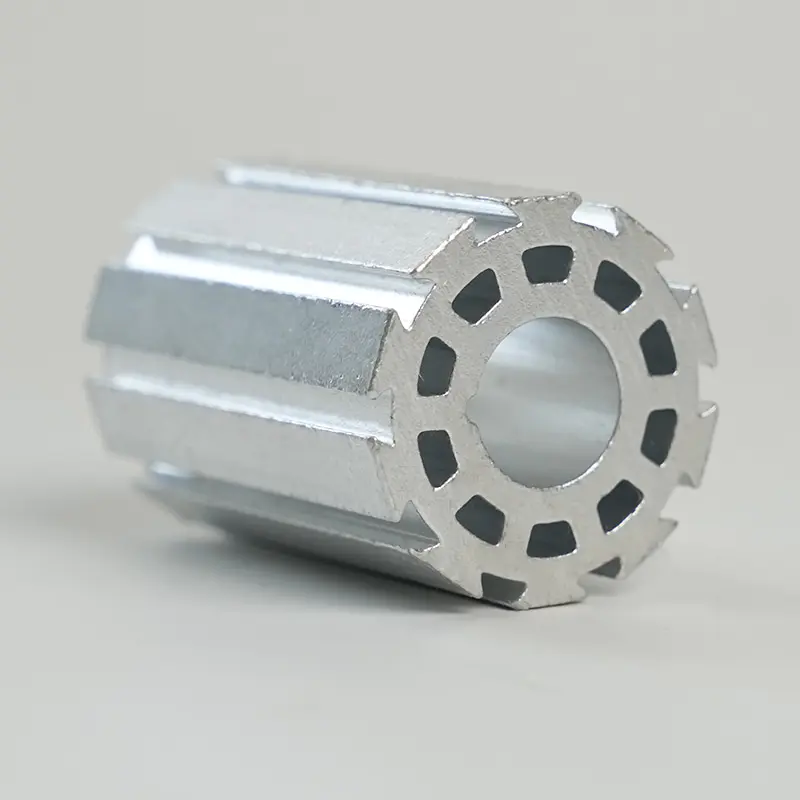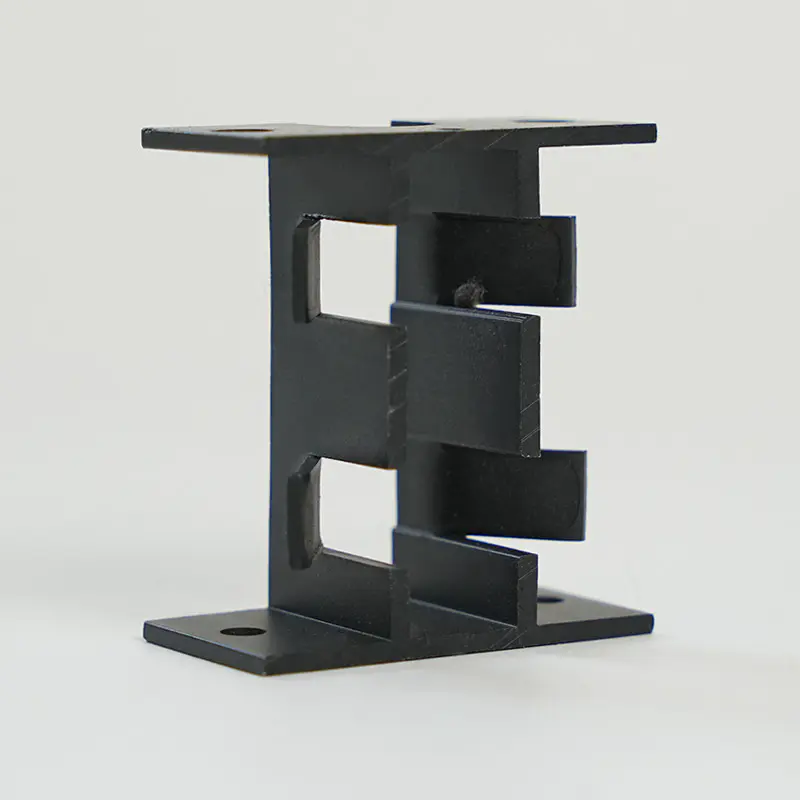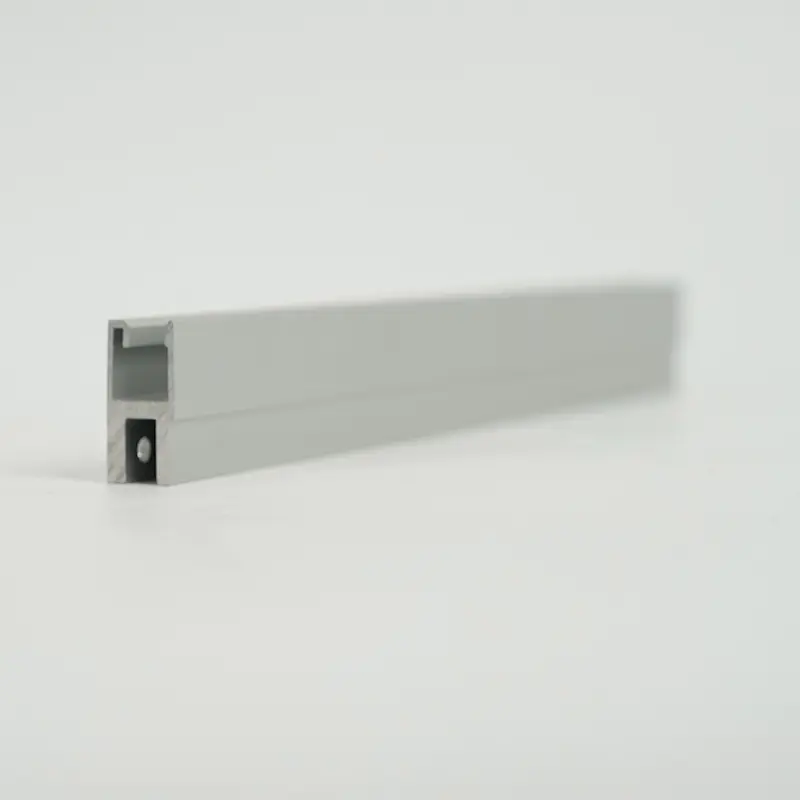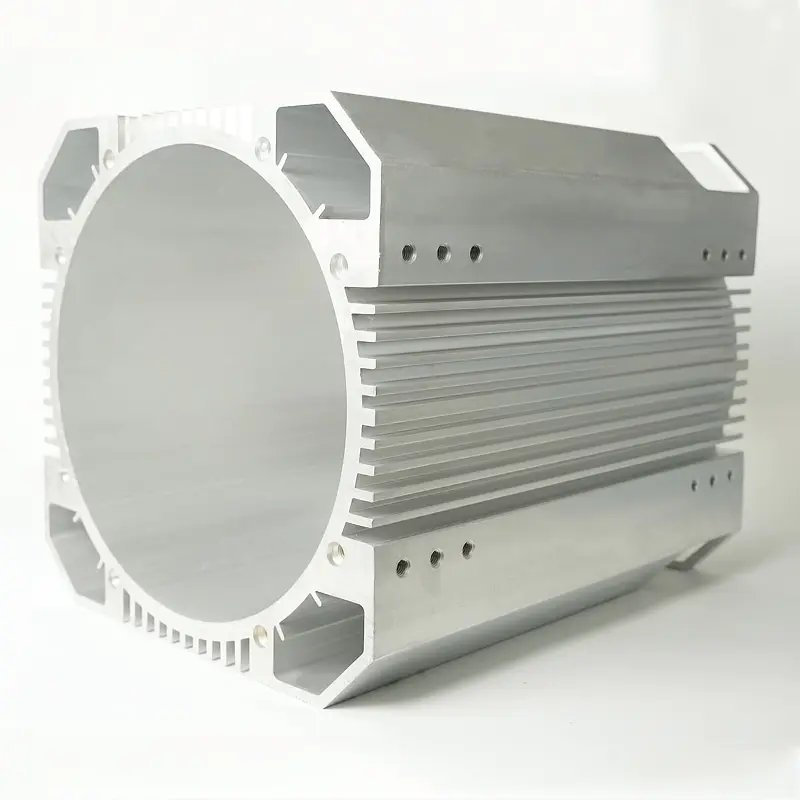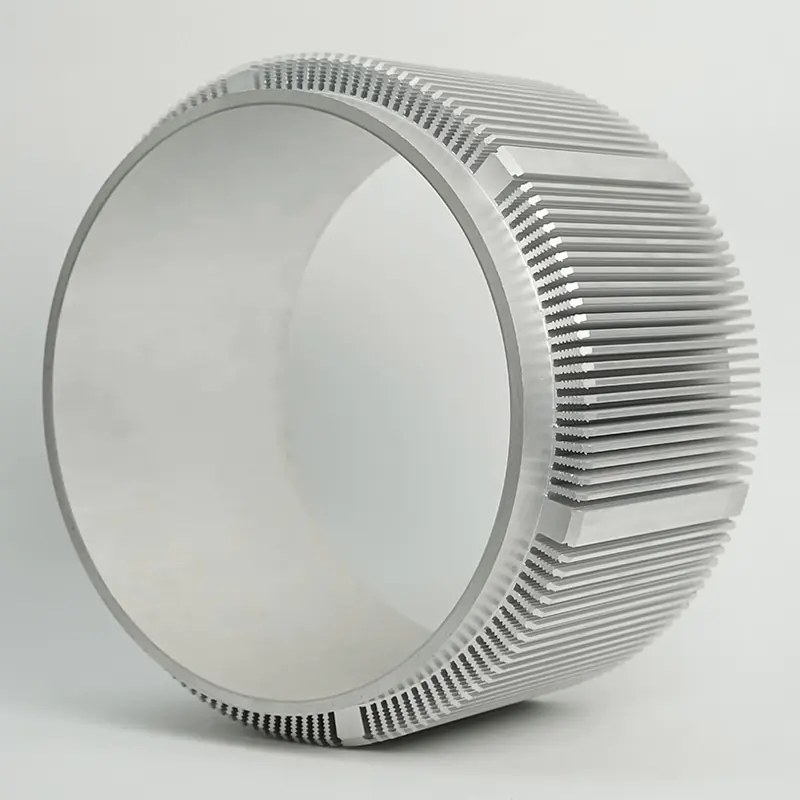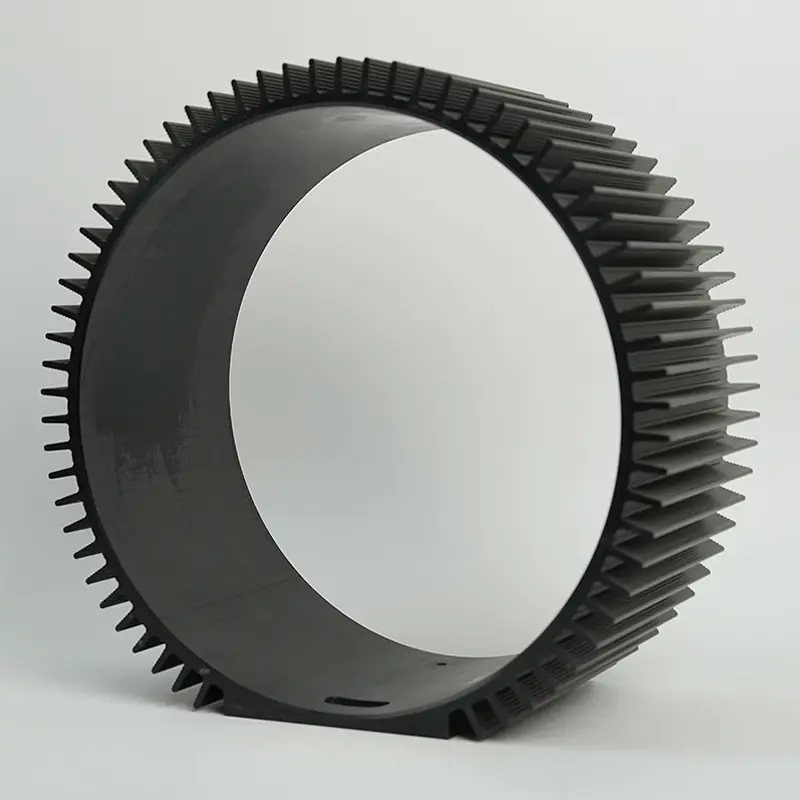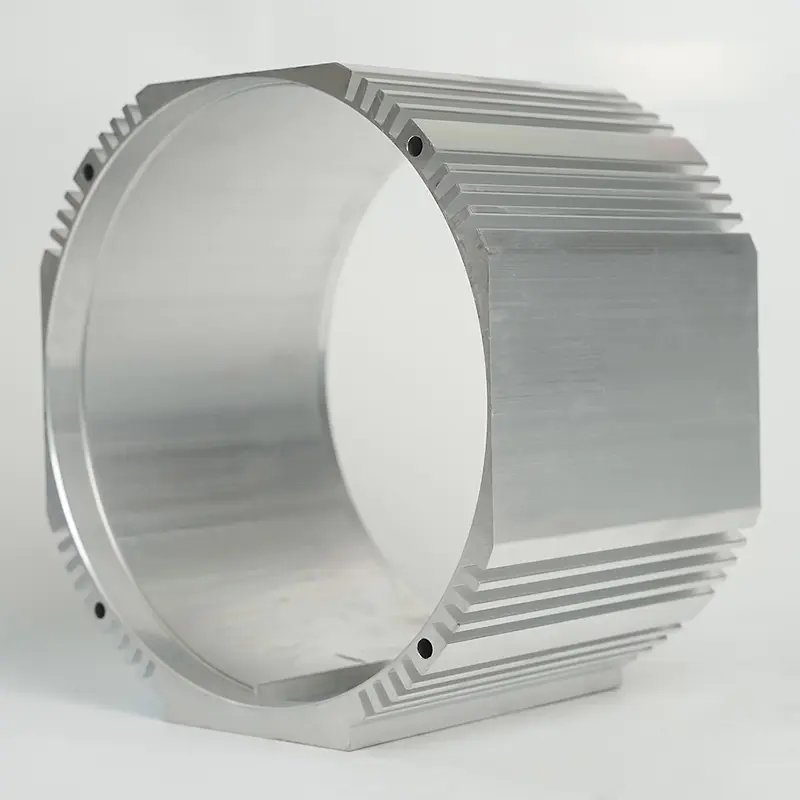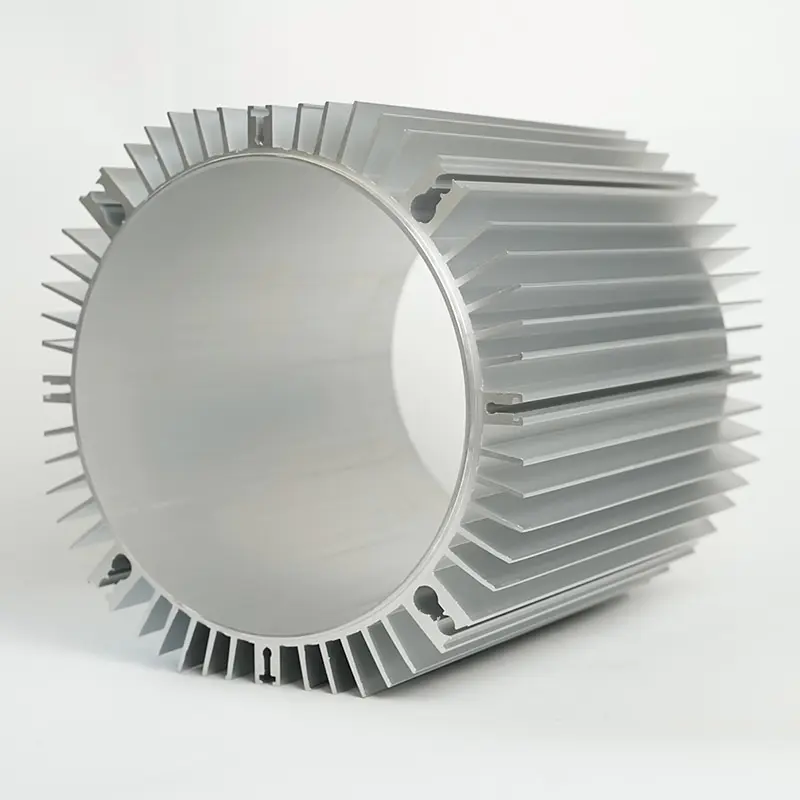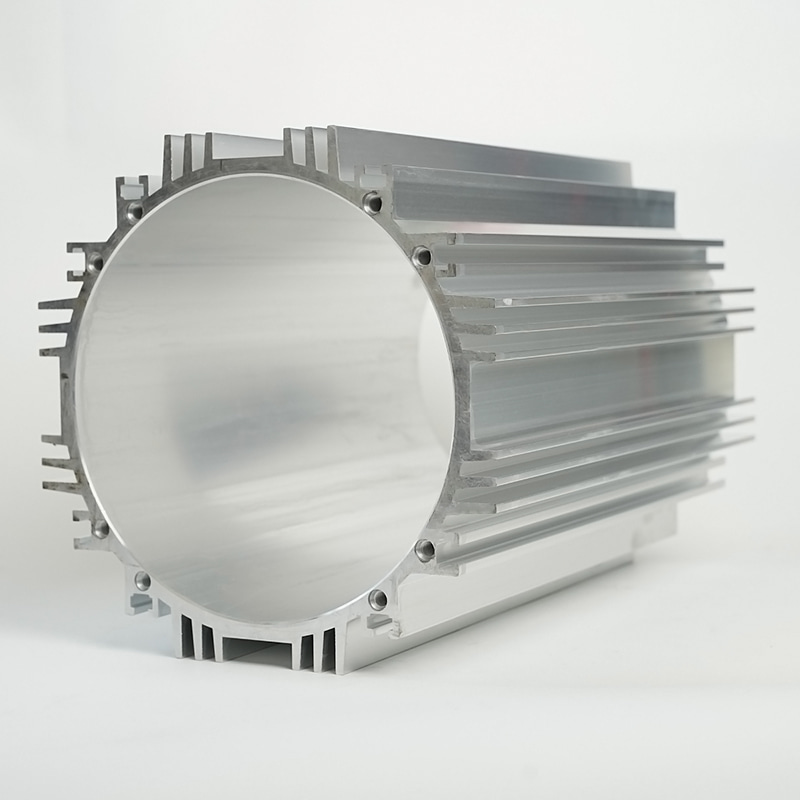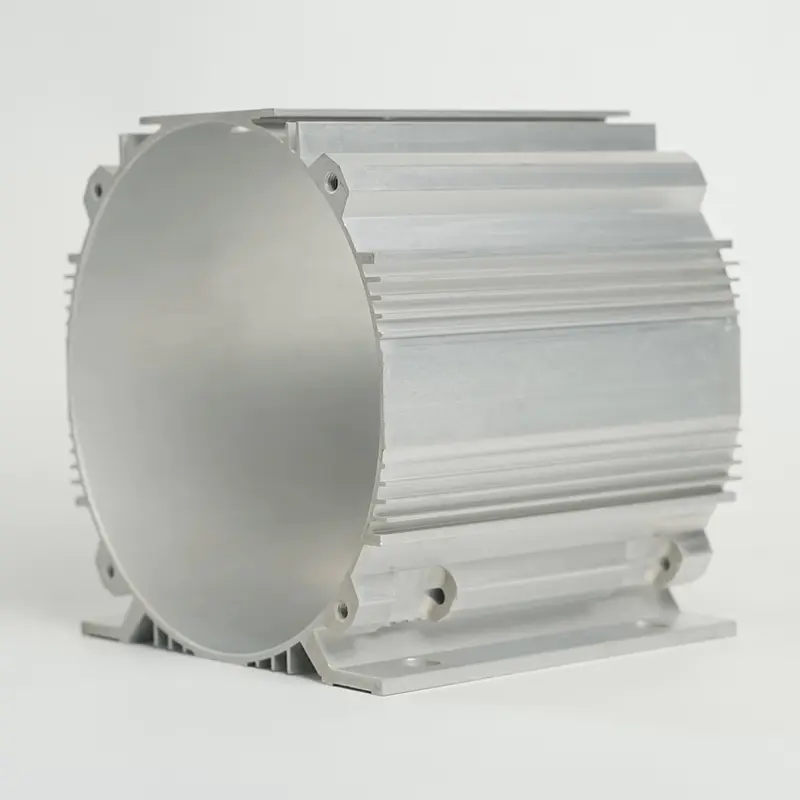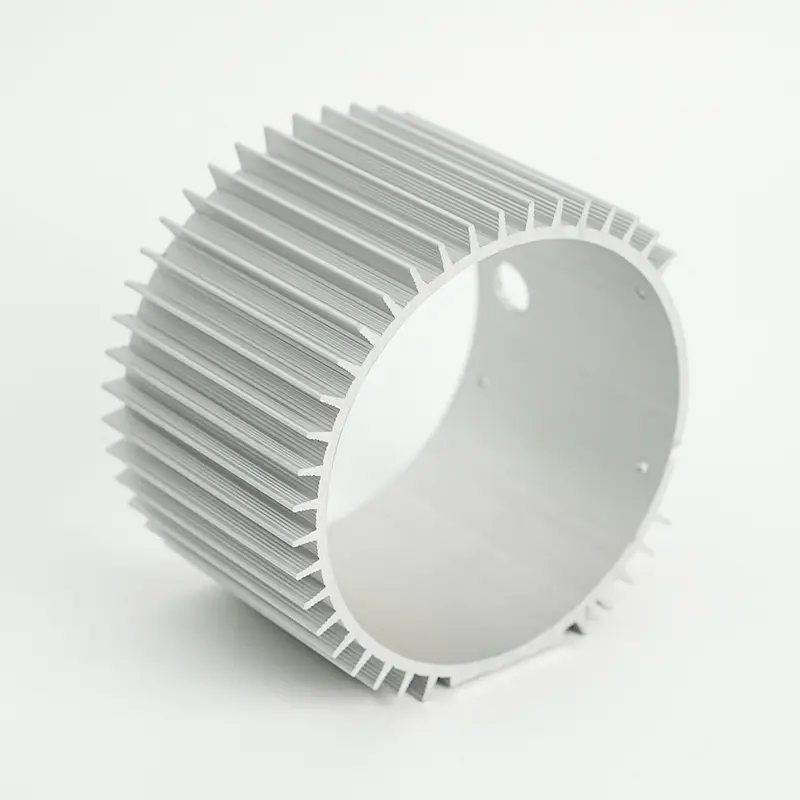Surface treatment of a 139 ID replacement aluminum air conditioner motor housing typically involves a series of steps designed to enhance its durability, aesthetics, and corrosion resistance. Below I will introduce some relevant knowledge about surface treatment.
Cleaning and Preparation: Enclosures often accumulate grease, dirt, and other contaminants during production and shipping. Clean the surface of the case thoroughly using an appropriate solvent or cleaner, such as acetone, alcohol, or deionized water, to ensure a clean surface. Alkaline cleaning can help remove grease and other organic matter while reducing oxides on metal surfaces. This may involve soaking the case in an alkaline cleaner or cleaning it with high-pressure cleaning equipment. Stubborn dirt or oxides that are difficult to remove may require mechanical cleaning methods such as brushing, sandblasting, or jet abrasion. This can help ensure that the shell surface is completely clean and ready for subsequent pre-processing steps. In some cases, acid cleaning can be used to remove oxides and other undesirable materials from metal surfaces. This cleaning usually requires care to avoid damage to the metal, and it must be rinsed thoroughly to ensure no acidic residue remains. Some pretreatment methods may include a surface activation step, such as treating the shell surface with acidic or alkaline solutions to promote adhesion of subsequent coatings. After cleaning is complete, the housing must be thoroughly washed to ensure that any detergent or other residue is removed. The shell should then be completely dry in preparation for further surface preparation.
Chemical Conversion Treatment: The first step in a chemical conversion treatment is usually to immerse the housing in an acidic solution, such as a pickling solution. This solution usually contains an acidic component, such as sulfuric acid or hydrochloric acid, to remove oxides, grease, and other impurities from the surface. The pickling process effectively cleans metal surfaces and prepares them for subsequent chemical conversion steps. A common chemical conversion treatment is to immerse the shell in a solution containing phosphate or other phosphating agents. This treatment forms a phosphide layer on the metal surface, providing good adhesion and enhancing the shell's receptivity to the coating. Phosphating treatment can also improve the corrosion resistance of the shell, making it more suitable for use in harsh environments. Another common chemical conversion treatment is to immerse the casing in a solution containing chromate or other chromium compounds. Chromic acid treatment can form a chromium oxide layer on the metal surface, providing good corrosion resistance and oxidation resistance. This treatment also improves the surface hardness and gloss of the shell. In addition to phosphating and chromic acid treatment, there are other chemical conversion treatment methods available, such as zinc phosphating, zinc-nickel phosphating, etc. These treatments are selected based on specific requirements and applications to ensure the enclosure has the required performance and characteristics. After the chemical conversion treatment is complete, the enclosure needs to be neutralized and thoroughly washed to ensure any residual treatment solution or chemicals are removed. This is a critical step to ensure successful implementation of subsequent coating or other surface treatment steps.
Sanding: Before polishing, the surface of the case needs to be carefully inspected to determine if there are any dents, imperfections, or unevenness. This helps identify areas that need concentrated treatment and sets goals for the sanding process. Choosing the right abrasive is critical to achieving the desired surface smoothness. Commonly used abrasives include grinding wheels, grinding paper, abrasive belts, etc. The particle size of the abrasive depends on the initial condition of the housing surface and the desired final surface quality. Polish the surface of the housing using the abrasive of choice. This may involve manual or mechanical operations, depending on the size, shape of the enclosure and the availability of manufacturing equipment. The buffing operation should cover the entire surface evenly to ensure a consistent surface smoothness. A gradually refining polishing sequence is usually used, starting with coarse grinding and progressing to fine grinding to ensure the final surface quality. This reduces surface imperfections and maximizes the look and feel of the case. When sanding, a lubricant or coolant is often used to reduce friction and heat and ensure good contact between the abrasive and the housing surface. This helps prevent overheating of the housing or premature wear of the abrasive while improving the efficiency and quality of grinding.

Web Menu
Product Search
Exit Menu
Industry News
Home / News / Industry News / Inner Diameter 139 Replacement Aluminum Air Conditioner Motor Housing Surface Treatment
Product Categories
Inner Diameter 139 Replacement Aluminum Air Conditioner Motor Housing Surface Treatment
Recommended Products
-
 Add: 78 Malgang Road, Jingjiang City, Taizhou City, Jiangsu Province, China
Add: 78 Malgang Road, Jingjiang City, Taizhou City, Jiangsu Province, China
-
 Tel: +86 189-5262-0099
Tel: +86 189-5262-0099
-
 E-mail: [email protected]
E-mail: [email protected]
Quick link
Products
Message
Copyright 2023 Jingjiang He Tai Motor Parts Manufacturing Co., Ltd. All Rights Reserved
Custom Micro Aluminum Gold Motor Shell


 English
English Español
Español
